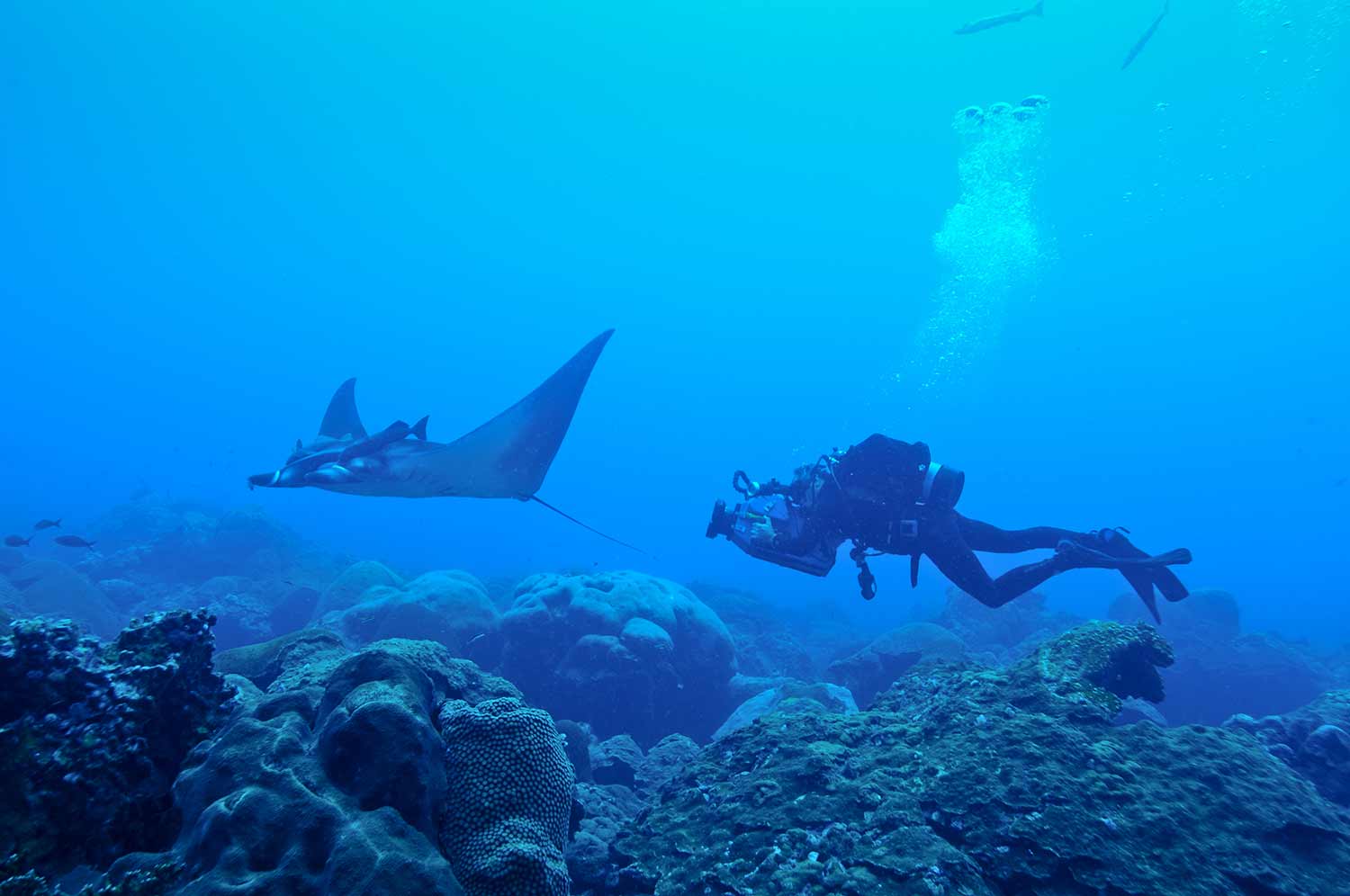
By:
- Brittany Hook
Published Date
By:
- Brittany Hook
Share This:

Manta ray with diver at Flower Garden Banks National Marine Sanctuary. Photo by G.P. Schmahl/FGBNMS
Sweet Baby Rays
Alumnus uncovers first-known manta ray nursery
Gliding through the water with the slow hypnotic beat of their fins, the otherworldly manta rays are a perfect combination of size and grace. These plankton-eating marvels can reach up to 23 feet in wingspan as adults. Yet despite being so conspicuous, these gentle giants are notoriously hard to access and study, so major knowledge gaps remain in their basic biology, ecology and life history.
Even less is known about baby mantas, which are virtually absent from nearly all known manta populations around the world. However, a graduate student at Scripps Institution of Oceanography recently made a discovery that could help unravel the mystery of juvenile mantas.
While obtaining his Ph.D. in marine biology, Joshua Stewart, M.S. ’15, Ph.D. ’18, and colleagues from NOAA’s Office of National Marine Sanctuaries confirmed the world’s first known manta ray nursery. The juvenile manta ray habitat is located in the Gulf of Mexico off Texas at NOAA’s Flower Garden Banks National Marine Sanctuary. The habitat is the first of its kind to be described in a peer-reviewed scientific study.
“The juvenile life stage for oceanic mantas has been a bit of a black box for us, since we’re so rarely able to observe them,” said Stewart, who earned his degree just one week after the groundbreaking study was published. “Identifying this area as a nursery highlights its importance for conservation and management, but it also gives us the opportunity to focus on the juveniles and learn about them.”
Stewart has spent the past seven years studying manta rays and has encountered hundreds of adults in the wild, but his sighting of a juvenile at Flower Garden Banks in 2016 was a rare event. Afterward, he worked with a team of researchers from the marine sanctuary to comb through 25 years of dive log data and photos collected by research divers.
Mantas have unique spot patterns on their underside that can be used to identify individuals, much like a human fingerprint. Stewart and the staff used the photos and observational data to determine that about 95 percent of the mantas that visit the banks are juveniles, measuring an average of 2.25 meters (7.38 feet) in wingspan.
The researchers determined that the sanctuary is an important site for juvenile mantas and the world’s first confirmed manta nursery ground.
Manta rays are threatened globally by targeted fisheries and bycatch, and giant mantas are listed as threatened under the U.S. Endangered Species Act. Discovery of the manta ray nursery underscores the importance of marine protected areas for conservation efforts. “There’s so much we don’t know about mantas, and that’s exciting from a science perspective,” says Stewart. “It means there are so many questions still waiting to be answered.”
The Sweet Baby Rays story was originally published in the Dec. 20 issue of Triton Magazine.
Share This:
You May Also Like
Stay in the Know
Keep up with all the latest from UC San Diego. Subscribe to the newsletter today.


